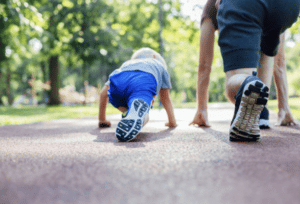In-Toing Symptoms in Children (Pigeon Toes)
In-toing, also known as “pigeon toes,” is a medical condition that affects the way children walk. It is characterised by an inward inclination of the feet when walking or running. In this blog, we will discuss the causes and symptoms of in-toing, as well as methods of detecting the condition.
What Is In-Toing?
In-toing is the medical term for a condition in which the feet turn inward when walking or running. The toes point towards each other in a “pigeon-toe” position, hence the colloquial name of this condition. The condition can be quite common in young children and is usually self-correcting over time. In-toing occurs in both children and adults, but it is more commonly seen in children. Younger children tend to have more flexible joints, which can make it easier for them to develop this condition.
What Are The Causes Of In-Toing?
In-toing can be caused by several different factors ranging from muscle tightness to joint malalignment. These include:
- Abnormalities in the structure of the feet such as flat feet or a high arch
- Tightness in the muscles and tendons that cross the ankle joint
- Skeletal deformities such as knock-knees or bow-leggedness
- Abnormalities in the alignment of the bones around the ankle joint such as a tibialis anterior overuse syndrome or a posterior tibial tendon dysfunction
- Neurological conditions such as cerebral palsy or spina bifida
How To Detect In-Toing
In-toing can be detected through a physical examination by a doctor. During the exam, they will look for signs of abnormal foot positioning such as an inward inclination of the feet when walking or running. They may also ask your child to walk on their toes or heels to assess any abnormalities in how their feet move. In some cases, a doctor may order an x-ray or other imaging tests to help identify and diagnose the cause of in-toing.



